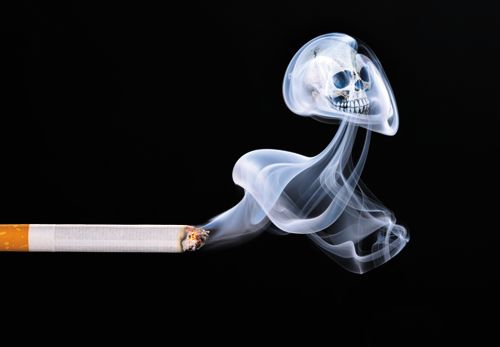Quantifying Nicotine Levels in Necrophagous Insects Using GC–MS
Researchers studying necrophargous blowflies for forensic investigations have developed a novel gas chromatography–mass spectrometry (GC–MS) method for the detection of nicotine. Nicotine has been attributed to a number of accidental or sudden, suicidal, and homicidal deaths.
Photo Credit: Michael Weber/Getty Image

Researchers studying necrophargous blowflies for forensic investigations have developed a novel gas chromatography–mass spectrometry (GC–MS) method for the detection of nicotine.1 Nicotine has been attributed to a number of accidental or sudden, suicidal, and homicidal deaths.2,3,4,5,6
Entomotoxicology is the combination of entomology, the study of insects, and toxicology, the study of the adverse effects of chemicals on living organisms. These analytical procedures and methods are useful for forensic investigations into suspicious deaths.
“In the forensic context of a suspicious death, the identification of drugs or other toxicological substances may help determine the cause and/or the circumstances of death,” explained Paola Magni from Murdoch University, in Perth, Australia. She continued, “Unfortunately the common toxicological analyses conducted on decomposed tissues are generally less sensitive and yielded almost erroneous results. Several studies have demonstrated that the toxicological analyses of the insects feeding on a body are able to provide a more reliable result even long after the death event.”
Nicotine is a commonly known chemical derived from the leaves and stems of the common tobacco plant. Its acute toxicity is often ignored, despite being considered one of the most deadly poisons known to man. “The fatal dose of nicotine is estimated to be 30–60 mg in adults and 10 mg in children,” Magni told The Column. “Contextually, cigarettes typically contain
10–20 mg of nicotine, but approximately only 1–1.5 mg is absorbed systemically during smoking.”
Nicotine can be readily absorbed across numerous membranes. A wide range of potential poisoning methods exist including poisoning from insecticides. “Non-fatal nicotine poisoning is sometimes the result of accidental intoxication, caused by unorthodox treatments against worms, eczema, and constipation, or suicide attempts using insecticides, transdermal nicotine patches, and e-cigarette refills. Recipes are readily available on the internet on how to extract pure nicotine from smoking tobacco. Also, the content of e-cigarette refills is potentially lethal for adults and children if taken other than directed, and children could be attracted to ingest such solutions because of their pleasant flavours,” added Magni.
Researchers reared blowfly larvae (Calliphora vomitoria) on different concentrations of nicotineâspiked liver before sample preparation. Analytical determinations for the detection of nicotine and its metabolites were performed using GC–MS. The nicotine detection method was validated according to ISO/IEC 17025 requirements and ICH guidelines.
Further data regarding the effects of nicotine on C. vomitoria larvae development was gained. “The results of this research show that C. vomitoria immatures accumulate both nicotine and its metabolite cotinine, and that the length and survival of C. vomitoria feeding on nicotineâcontaining liver can be significantly affected by the presence of the drug. Interestingly, although the effect on survival is dose dependent, the dose does not have effects on the total duration of their life cycle, from egg to adult. Furthermore, the presence of nicotine in the food substrate has effects on the body structure of C. vomitoria, as both larvae and pupae result shorter than those of the control,” explained Magni.
The ability to detect the presence of potentially lethal doses of nicotine in blowfly larvae means that the method could prove useful in future forensic investigations where nicotine is suspected to be involved in some form. This is especially true in cases where high levels of decomposition are an issue. Nicotine products are easily available and highly toxic to living beings and therefore the possibility of nicotine overdose, accidental or intentional, should not be ignored.
The research teams from Murdoch University (Australia), University of Turin (Italy), and Boston University (USA) who are responsible for this study are currently conducting a similar study on ketamine in blowfly. The dissociative anaesthetic has seen a surge in popularity for recreational use and is increasingly used in cases of rape. Furthermore, the effects of ketamine on the blowfly’s survival and growth rate will be investigated. - L.B.
References
- P.A. Magni et al., Forensic Sci. Int.261, 53–60 (2016).
- W.D. McNally. J. Lab. Clin. Med.8, 83–85 (1922).
- J.M. Corkery et al., Forensic Sci. Int.199, e9–e13 (2010).
- N. Dillion, California Nuclear Power Plant Engineer Convicted of Killing Wife with Nicotine (NY Daily News, 2014).
- A.K. Chaturvedi et al., Forensic Sci. Int.23, 265–275 (1983).
- C. Lardi et al., Forensic Sci. Int.236, e14–e18 (2014).

Characterizing Plant Polysaccharides Using Size-Exclusion Chromatography
April 4th 2025With green chemistry becoming more standardized, Leena Pitkänen of Aalto University analyzed how useful size-exclusion chromatography (SEC) and asymmetric flow field-flow fractionation (AF4) could be in characterizing plant polysaccharides.
Investigating the Protective Effects of Frankincense Oil on Wound Healing with GC–MS
April 2nd 2025Frankincense essential oil is known for its anti-inflammatory, antioxidant, and therapeutic properties. A recent study investigated the protective effects of the oil in an excision wound model in rats, focusing on oxidative stress reduction, inflammatory cytokine modulation, and caspase-3 regulation; chemical composition of the oil was analyzed using gas chromatography–mass spectrometry (GC–MS).










